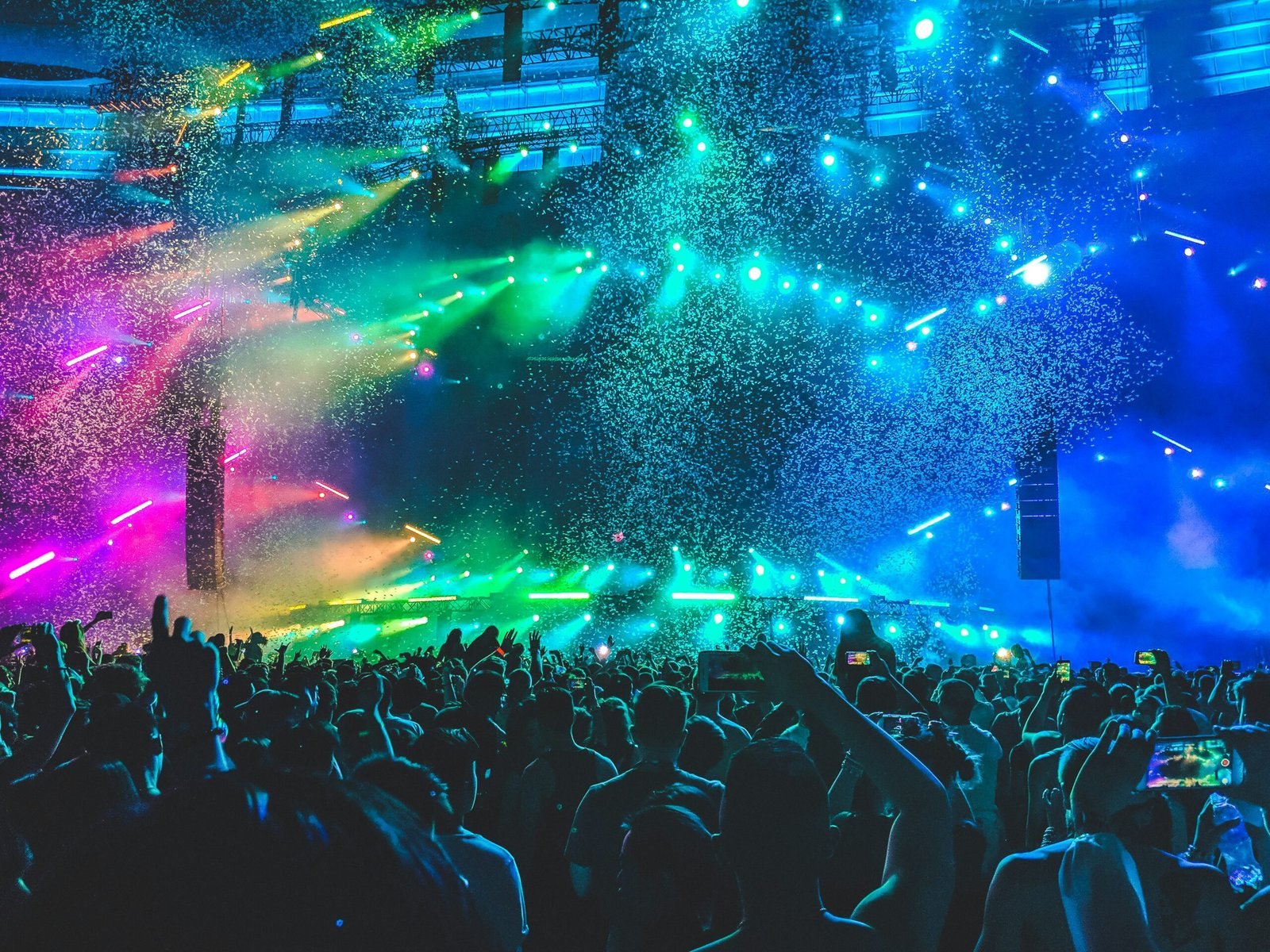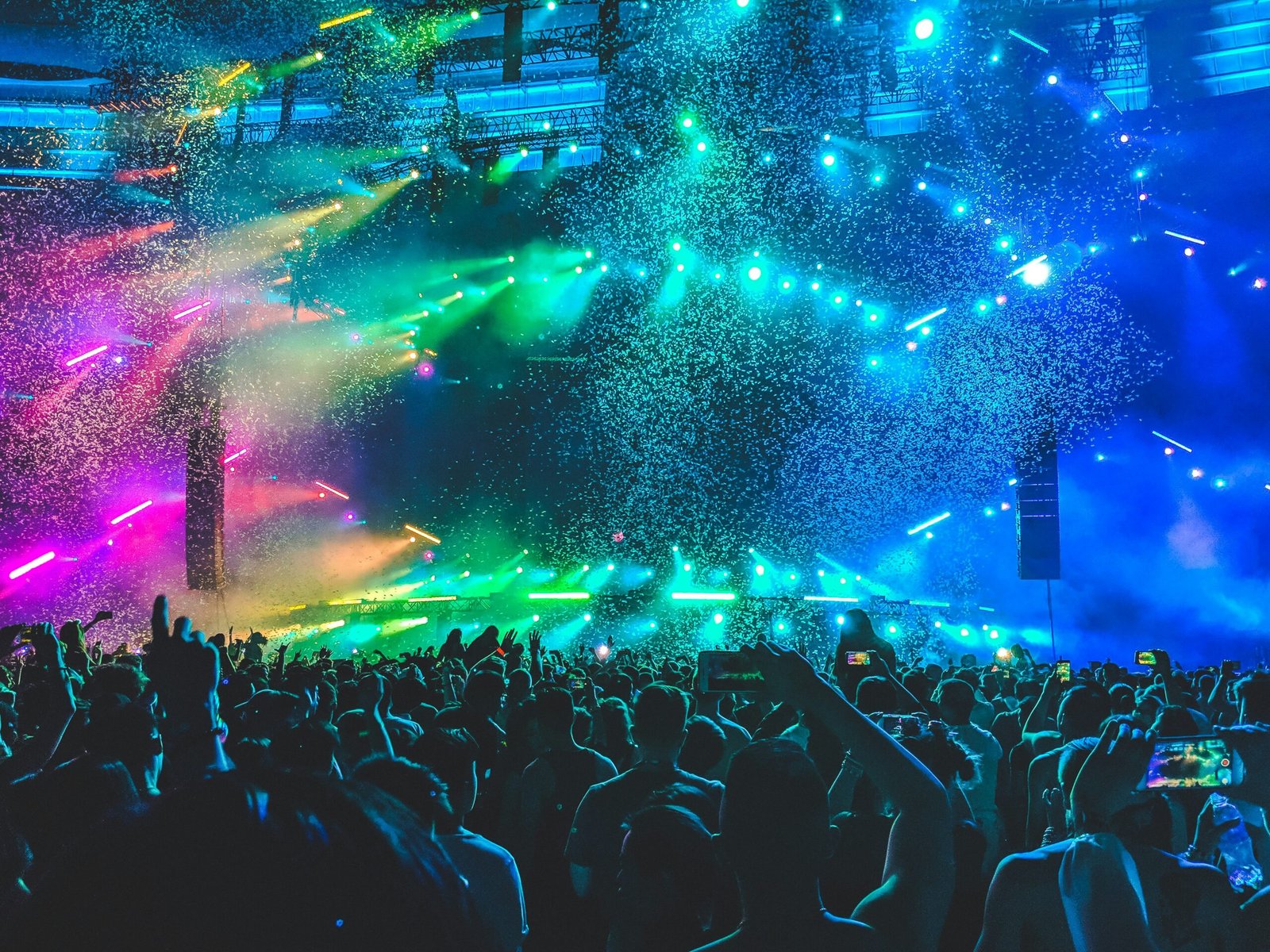
Introduction to Traditional Dance and Music Festivals
Traditional dance and music festivals are vibrant occasions that bring communities together to celebrate their cultural heritage. These festivals are not merely entertainment; they play a pivotal role in preserving the artistic expressions that define various societies around the globe. Each festival serves as a platform where artists and performers can showcase traditional forms of dance and music, which are often passed down through generations. As such, they are not just events but communal experiences that embody the history, values, and narratives of a culture.
One of the most significant aspects of these festivals is their ability to foster a sense of identity and belonging. Participants engage in traditional dances and music that reflect their ancestral roots, often donning costumes that showcase their cultural aesthetics. This artistic participation strengthens community bonds while providing an opportunity for individuals to connect with their heritage. Festivals often include workshops, exhibitions, and performances, encouraging both locals and visitors to immerse themselves in the rich artistic traditions of the region.
Additionally, traditional dance and music festivals contribute to cultural sustainability by educating younger generations about their cultural practices. Through interactive activities, festivals help instill a sense of pride in one’s heritage, motivating the youth to learn and take part in these time-honored traditions. As cultural custodians, communities recognize the importance of these festivals in nurturing and revitalizing traditional arts, ensuring that they do not fade into obscurity.
In summary, traditional dance and music festivals are vital cultural events that celebrate artistic expression, strengthen community ties, and preserve heritage. They not only entertain but also educate, ensuring that the vibrancy of cultural legacies continues to flourish for future generations.
The Cultural Importance of Dance and Music
Dance and music serve as vital forms of expression that reflect the history, beliefs, and values of diverse communities around the world. These art forms have deep cultural roots, often spanning generations. They are not merely forms of entertainment but are imbued with significant meaning that resonates with the social fabric of each society. Traditional dance and music often tell the stories of ancestors, narrate historical events, and celebrate cultural milestones, thus providing a sense of identity and continuity.
In many cultures, dance is intertwined with music, creating a powerful medium for storytelling. Rhythms and movements encapsulate collective memories and experiences. For instance, Indigenous tribes often use dance and music in rituals to honor their ancestors and maintain a connection to their heritage. Through the repetition of these art forms, younger generations not only learn about their history but also engage with it, ensuring that cultural knowledge is passed down. This intergenerational transmission fosters a profound sense of belonging and community cohesion, as individuals come together to celebrate shared traditions.
Furthermore, these artistic expressions play a pivotal role in cultural education. They serve as an essential tool for teaching younger members of the community about their customs, values, and beliefs. Dance and music festivals provide an opportunity for cultural exchange and promote understanding between different communities. By participating in such events, individuals are given the chance to appreciate diverse perspectives, fostering respect and tolerance. Consequently, traditional dance and music contribute significantly to the cultural landscape by highlighting the richness and diversity of human experience.
Types of Traditional Dance and Music Festivals
Traditional dance and music festivals exhibit a rich tapestry of cultural expressions, reflecting the diverse traditions and communal identity of societies worldwide. These festivals can be broadly categorized into three main types: folk festivals, religious celebrations, and national events. Each of these categories showcases unique practices, instruments, and dance forms, contributing to the vibrant fabric of global traditions.
Folk festivals are often grassroots events, deeply rooted in the cultural heritage of specific communities. They may celebrate seasonal changes, harvests, or historical events, and feature local music and dance forms that have been passed down through generations. For example, the Smithsonian Folk Life Festival in the United States brings together various cultural identities, allowing participants to engage in traditional crafts, storytelling, and authentic performances. Similarly, the International Folk Festival in Edinburgh highlights traditional music and dance from around the world, emphasizing the importance of community participation.
Religious celebrations often revolve around significant spiritual observances and include elaborate music and dance performances as expressions of faith. These festivals can vary dramatically based on cultural and religious backgrounds. Rama Navami in India, for instance, features vibrant processions with traditional music and dance, celebrating the birth of Lord Rama. Likewise, the Diwali festival involves music and dance that symbolize the victory of light over darkness, showcasing the integration of spiritual beliefs and artistic expression.
National events are typically organized to highlight a country’s cultural heritage, promoting national pride and unity. Festivals like Brazil’s Carnival, characterized by vibrant samba music and ecstatic dance parades, serve not only as entertainment but also as a celebration of Brazil’s rich cultural diversity. In contrast, the Fête de la Musique in France encourages musicians and dancers of all genres to perform in public spaces, fostering a sense of community while promoting cultural expression. Together, these various types of traditional dance and music festivals illustrate the extraordinary diversity and vibrancy inherent in cultural practices around the globe.
Spotlight on Notable Festivals Around the World
Traditional dance and music festivals serve as vibrant expressions of cultural heritage, celebrating the nuances of human creativity through performances that resonate deeply with local communities and beyond. One of the most renowned events globally is the Rio Carnival in Brazil, held every year before Lent. This spectacular festival features samba parades, street parties, and elaborate costumes. The roots of the Rio Carnival date back to the 18th century, evolving from European cultural influences into a unique celebration of Afro-Brazilian traditions. The joyous exuberance of samba dances, captivating choreography, and the rhythmic beats create an atmosphere of jubilation, showcasing Brazil’s rich cultural tapestry.
Moving to Asia, we encounter the Diwali celebrations in India, a festival symbolizing the victory of light over darkness. Although primarily a religious observance, Diwali incorporates various traditional dance forms, such as Bharatanatyam and Kathak. Communities come alive with vibrant performances that reflect stories from ancient scriptures. The festival not only includes stunning dance presentations but also music, fireworks, and family gatherings, creating a holistic experience of joy and unity. Diwali’s history can be traced back over 2,500 years, rooted in various legends and regional traditions across India.
In Europe, the Edinburgh Festival in Scotland stands out as a celebration of arts, incorporating traditional music and dance performances alongside contemporary acts. Established in 1947, this festival includes the Edinburgh Festival Fringe, which emphasizes inclusivity and artistic expression. Traditional Scottish dances, such as Highland and Ceilidh, play a significant role in drawing audiences into the rich cultural history of Scotland. The unique elements of storytelling through dance and the melodic sounds of bagpipes contribute to an enchanting experience for attendees from around the globe. Each of these festivals highlights the diverse ways in which music and dance unite communities and enrich cultural identity.
The Role of Community in Festivals
Community involvement is central to the success and vibrancy of traditional dance and music festivals. These events often represent a collective effort by local populations, emphasizing a deep-seated cultural heritage that transcends generations. The enthusiasm and dedication of community members transform a mere event into a memorable celebration of identity, fostering pride and unity among participants and attendees.
Artists play a crucial role in these festivals, serving as a bridge between the past and the present. Local musicians and dancers take center stage, showcasing their talents and often reviving age-old traditions that might otherwise fade into obscurity. Their performances not only reflect individual artistry but also embody the shared cultural narratives of the community. Festivals allow these artists to connect with their roots, express their heritage, and engage the audience in a communal appreciation of cultural expressions.
Volunteers are equally significant in the orchestration of these gatherings. Many community members dedicate their time and effort to the meticulous planning and execution of various festival components, from setting up stages to managing logistics. Their contributions can significantly enhance the guest experience, ensuring that all aspects—from security to hospitality—run smoothly. This grassroots involvement cultivates a strong sense of belonging and instills pride in community identity, as everyone comes together for a common purpose.
Local businesses also play a vital role in the fabric of these festivals. By providing essential services, sponsorship, or even goods—be it food, crafts, or merchandise—they enrich the festival atmosphere, making it a multifaceted experience. Such collaborations between businesses and the community create an economic ripple effect, benefiting not only the festival but also the local economy. Thus, when festivals flourish, so too do the communities that breathe life into them.
Challenges Facing Traditional Festivals Today
Traditional dance and music festivals, which serve as vital expressions of cultural heritage, are grappling with numerous challenges in today’s rapidly evolving landscape. One of the most significant issues is the forces of globalization, which often dilute local traditions as cultures intermingle and merge. This integration can lead to the overshadowing of unique cultural identities as wider, more dominant trends capture public interest, reducing the distinctiveness of traditional performances.
The impact of technology also poses a formidable challenge. While technology has facilitated the promotion and accessibility of traditional festivals through social media and streaming services, it has simultaneously altered audience engagement. Many younger individuals gravitate toward digital entertainment, leading to declining physical participation in these events. Traditional festivals now face the dilemma of adapting to modern viewing habits while trying not to lose the immersive, community aspects that form their core identity.
Moreover, economic constraints contribute to the difficulties faced by these festivals. As funding reduces and sponsorship opportunities become scarce, many organizers struggle to maintain the quality and authenticity of their events. Rising costs associated with hosting large gatherings can deter participation from local communities, who may view these festivals as becoming increasingly commercialized rather than as genuine cultural celebrations.
In response to these multifaceted challenges, many traditional dance and music festivals are adopting innovative strategies to maintain cultural authenticity while remaining relevant. Some organizers are incorporating modern elements without compromising traditional roots, finding a balance that respects heritage while appealing to contemporary audiences. This approach not only fosters an appreciation for cultural diversity but also encourages greater attendance and participation, ensuring that traditional festivals continue to thrive amidst the pressures of the modern world.
The Impact of Festivals on Tourism
Traditional dance and music festivals serve as vital economic catalysts that significantly influence local tourism dynamics. These festivals attract a diverse range of visitors, including domestic travelers and international tourists, eager to experience authentic cultural expressions. The influx of attendees leads to a marked increase in consumer spending on accommodations, dining, and local attractions, thereby injecting capital directly into the local economy. This financial boost not only sustains existing businesses but also encourages the emergence of new enterprises, such as artisan shops and food vendors, further enriching the community’s economic landscape.
Moreover, traditional festivals play a critical role in promoting cultural exchange. Tourists visiting these events gain access to unique cultural experiences that might be unavailable in their home countries. This not only enhances tourists’ appreciation for local traditions but also fosters greater understanding and respect among diverse cultures. Festivals can thus be viewed as conduits for promoting intercultural dialogue, where attendees partake in workshops, enjoy performances, and engage with local artisans. Such interactions nurture a sense of global community while allowing local traditions to be shared beyond geographical boundaries.
However, the impact of festivals on tourism is not without its challenges. The balance between development and preservation of cultural heritage is crucial. As demand for these events increases, there exists a risk of commercialization that could dilute the authenticity of the traditions being showcased. Hence, it becomes imperative for stakeholders, including local governments and community organizations, to establish measures that will promote sustainable tourism practices. Emphasizing responsible visitation can help ensure that the socio-economic benefits of traditional dance and music festivals do not come at the expense of the very cultures they intend to celebrate.
Future Trends in Traditional Festivals
As the world evolves, so do the traditional dance and music festivals that celebrate cultural heritage. Emerging trends indicate that these festivals are set to undergo significant transformations driven by advancements in technology, shifts in participation dynamics, and increased awareness of sustainability.
One primary trend is the integration of technology into traditional festivities. Organizers are increasingly utilizing virtual reality (VR) and augmented reality (AR) to enhance the audience experience. This allows participants, regardless of their geographical location, to immerse themselves in the cultural performances. Virtual participation has gained traction, particularly in the wake of the COVID-19 pandemic, which forced many festivals to adapt to digital platforms. Live-streaming performances, interactive workshops, and online discussions have provided alternative avenues for engagement, reaching wider audiences globally.
Furthermore, the use of social media platforms has surged, allowing festivals to showcase their unique elements in real-time and encouraging audience interaction. This digital presence not only fosters a community among festival-goers but also attracts younger generations, who typically gravitate towards technology-driven experiences. By incorporating live hashtags and shareable content, traditional festivals can enhance their visibility, foster interactivity, and stimulate interest in diverse cultural expressions.
In parallel, social consciousness regarding environmental issues is prompting many traditional festivals to adopt sustainability initiatives. From reducing plastic waste to implementing eco-friendly transportation options, organizers are making conscious efforts to minimize their environmental footprint. Engaging local communities in sustainable practices not only preserves the cultural authenticity of the event but also fosters a collective commitment to safeguarding cultural heritage and the environment for future generations.
In conclusion, the future of traditional dance and music festivals will likely be characterized by a harmonious blend of technology, virtual participation, and sustainability. These adaptations may serve to enhance the cultural significance of these festivals while ensuring their relevance in an ever-changing society.
Conclusion: The Enduring Power of Cultural Festivities
In a rapidly changing world, the traditional dance and music festivals continue to hold enduring significance. These cultural celebrations serve as vital expressions of identity, community, and continuity, reminding us of our shared heritage. Despite modern influences and technological advancements, the power of these festivals to enrich communities remains unmatched. They create a platform where diverse backgrounds intersect, and interpersonal connections thrive. Through vibrant performances and traditional music, participants and spectators alike experience a sense of belonging that transcends cultural barriers.
Moreover, traditional dance and music festivals foster mutual respect among various cultural groups. They bring together individuals from varying ethnic backgrounds, encouraging them to participate in cultural exchanges that celebrate their unique heritages while also finding common ground. This intercultural dialogue enhances understanding and appreciation of differing traditions, promoting social cohesion and harmony within multicultural societies.
The festivals also play an educational role, offering opportunities for younger generations to learn about their cultural roots and the historical significance of music and dance within their communities. Through workshops and demonstrations, attendees can engage with traditional art forms, ensuring that age-old practices are passed down and cherished. This contributes to the preservation of cultural diversity, which is becoming increasingly vital in an era dominated by globalization.
In conclusion, traditional dance and music festivals represent much more than mere entertainment; they embody the essence of community, identity, and shared experience. By celebrating and preserving these cultural festivities, we reinforce their importance as vital expressions of human creativity and connectivity, ultimately strengthening our social fabric in an increasingly interconnected world.

